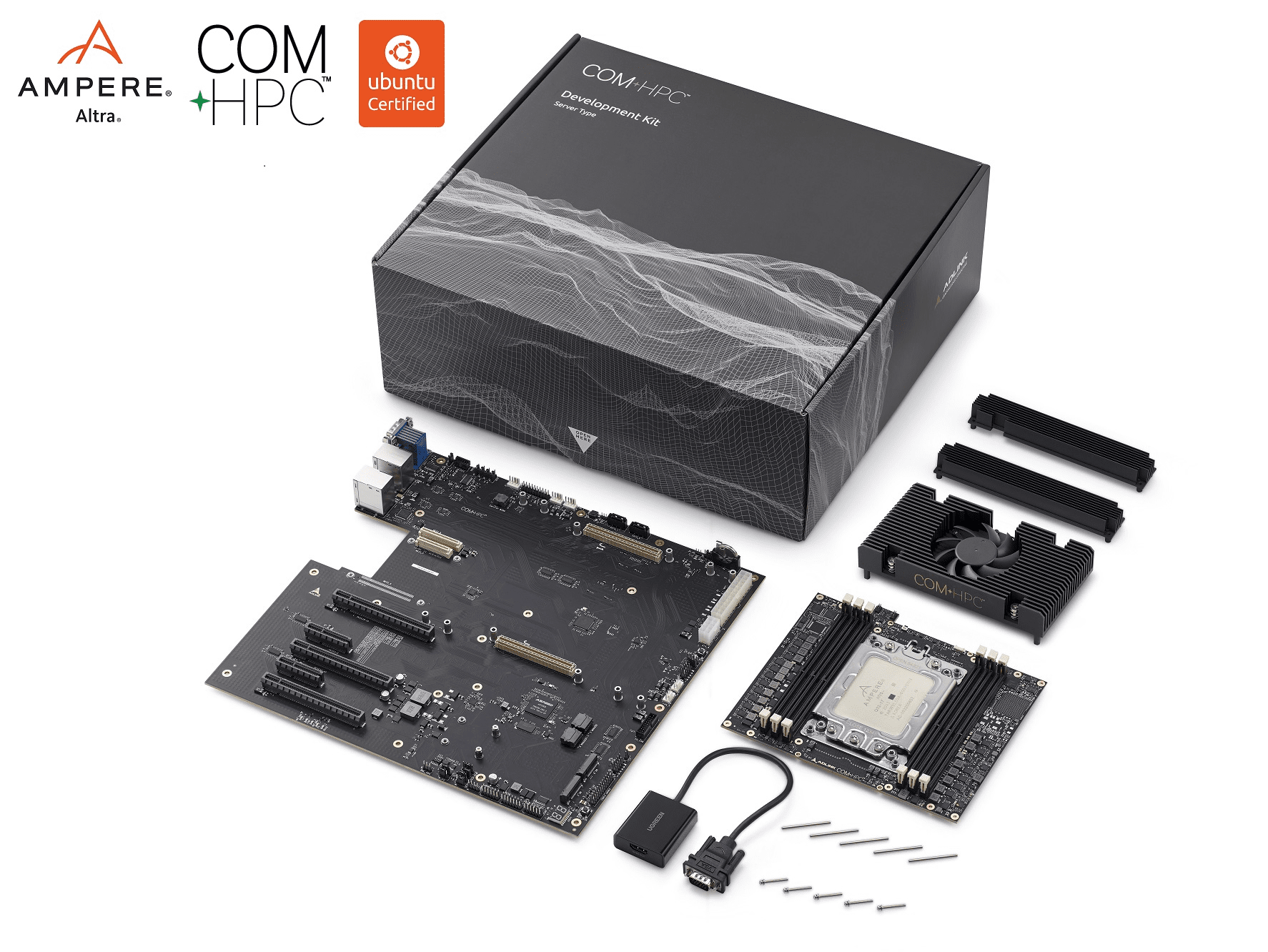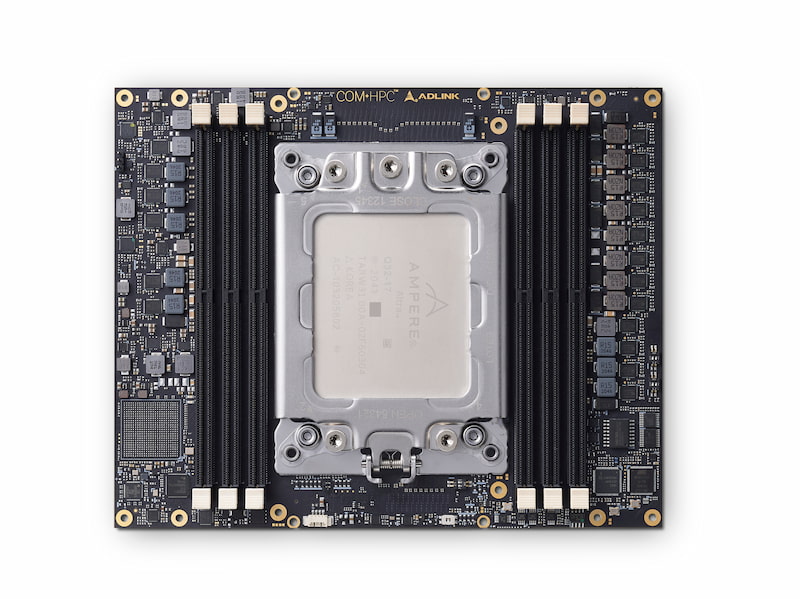December 20, 2023
congatec launches COM Express Compact module with brand new Intel® Core™ Ultra processors
COM-HPCCongatecIndustry NewsMember NewsNews
Next-generation AI computing for the edge
Deggendorf, Germany, 20 December 2023 * * * congatec – a leading vendor of embedded and edge computing technology – is introducing its latest range of COM Express Compact modules based on the Intel® Core™ Ultra processors. Providing a unique combination of heterogeneous compute engines, including CPU, GPU and NPU, the new modules are an ideal fit to run demanding AI workloads at the edge.
Next to the powerful P-cores and efficient E-cores for general computing and the high-performance Intel® Arc™ GPU for graphics-intensive tasks, the integrated Neural Processing Unit (NPU) called Intel® AI Boost contributes advanced neural processing capabilities to the overall computational architecture. The integrated NPU enables highly efficient integration of advanced artificial intelligence workloads at lower system complexity and costs than discrete accelerators. This makes the new Intel Core Ultra processor-based Computer-on-Modules especially beneficial for combining high-performance real-time computing with powerful AI capabilities in surgery robots and medical imaging and diagnostic systems, where automatically generated critical findings can support medical personnel. Other application targets are situational awareness in industrial applications such as inspection systems, stationary robotic arms, autonomous mobile robots (AMRs), and autonomous guided vehicles (AGVs), to name just a few.
“The new conga-TC700 COM Express Compact Computer-on-Modules provide application-ready AI capabilities in a plug-and-play form factor. Its ecosystem of customer solution-focused products and services significantly improves the time-to-market for implementing the latest state-of-the-art x86 with powerful AI capabilities as required in industrial process control, microgrid controller, medical ultrasound and x-ray, automated check-out terminals, powerful AMRs, and many more,” says Tim Henrichs, VP Global Marketing & Business Development at congatec. “OEMs can simply upgrade existing applications by exchanging the module and instantly gain access to cutting-edge AI technologies. It has never been easier to integrate artificial intelligence in x86-based systems.”
The feature set at a glance
The new conga-TC700 COM Express Compact Computer-on-Modules with Intel Core Ultra processors (code named Meteor Lake) are among the most power-efficient x86 client SoCs available on the market. Up to 6 P-Cores, up to 8 E-Cores, and 2 Low Power E-Cores support up to 22 threads, making it possible to consolidate distributed devices onto a single platform for the lowest total cost of ownership. The SoC-integrated Intel Arc GPU with up to 8 Xe Cores and up to 128 EUs can handle stunning graphics up to 2x 8K resolution and ultra-fast GPGPU-based vision data (pre)processing. The integrated NPU Intel AI Boost executes machine learning algorithms and AI inferences particularly efficient. Up to 96 GB DDR SO-DIMM with in-band ECC at 5600 MT/s contributes to power-efficient high data throughput and low latency.
The modules are supported by congatec’s OEM solution-focused high-performance ecosystem, including highly efficient active and passive cooling solutions and ready-to-use evaluation carrier boards. Customers can order the modules with pre-evaluated real-time hypervisor technology from Real-Time Systems for virtual machine deployments and workload consolidation in edge computing scenarios. Service offerings include shock and vibration tests for custom system designs, temperature screening, and high-speed signal compliance testing, along with design-in services and all required training sessions to simplify the use of congatec’s embedded computer technologies to round off the ecosystem.
The new conga-TC700 COM Express Compact Type 6 modules support the embedded temperature range from 0 °C to 60 °C and are available in the following standard configurations:
| Processor | P-cores / E-cores / Threads |
Max. Turbo Freq. [GHz] P-cores / E-cores |
Base Freq. [GHz] P-cores / E-cores |
Intel Smart Cache [MB] | Graphics [Execution Units] | CPU Base Power [W] |
| Intel Core Ultra 7 155H processor | 6/10/22 | 4.8 / 3.8 | 1.4 / 0.9 | 24 | 128 | 28 |
| Intel Core Ultra 7 155U processor | 2/10/14 | 4.8 / 3.8 | 1.7 / 1.2 | 12 | 64 | 15 |
| Intel Core Ultra 5 125H processor | 4/10/18 | 4.5 / 3.6 | 1.7 / 1.2 | 18 | 112 | 28 |
| Intel Core Ultra 5 125U processor | 2/10/14 | 4.3 / 3.6 | 1.3 / 0.8 | 12 | 64 | 15 |
All features of the new Intel Core Ultra processor-based conga-TC700 COM Express Compact modules can be found here: https://www.congatec.com/en/products/com-express-type-6/conga-tc700/
For more information on the innovative Intel Core Ultra processor platform please visit https://www.congatec.com/en/technologies/intel-meteor-lake-h-based-computer-on-modules/
You can experience these and other innovations at embedded world from 9-11 April 2024: https://www.congatec.com/en/congatec/events/congatec-at-embedded-world-2024/
Visit congatec in Hall 3 at Stand 241
* * *
About congatec
congatec is a rapidly growing technology company focusing on embedded and edge computing products and services. The high-performance computer modules are used in a wide range of applications and devices in industrial automation, medical technology, robotics, telecommunications and many other verticals. Backed by controlling shareholder DBAG Fund VIII, a German midmarket fund focusing on growing industrial businesses, congatec has the financing and M&A experience to take advantage of these expanding market opportunities. congatec is the global market leader in the computer-on-modules segment with an excellent customer base from start-ups to international blue chip companies. More information is available on our website at www.congatec.com or via LinkedIn, X (Twitter) and YouTube.

 Figure 1. ADLINK performed eight weeks of testing on the
Figure 1. ADLINK performed eight weeks of testing on the 
